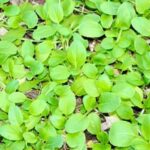Are you a gardening enthusiast in Northern Arizona looking to start your own vegetable garden? The unique climate and soil conditions in this region can present both challenges and opportunities for growing your favorite veggies.
In this article, we will explore the ins and outs of vegetable gardening in Northern Arizona, from understanding the climate and soil to finding the best vegetables to grow. Whether you’re a beginner or an experienced gardener, you’ll find valuable tips and resources to help you cultivate a successful garden in this area.
Northern Arizona’s diverse landscape and climate can make vegetable gardening a rewarding but challenging endeavor. Understanding the specific climate and soil conditions in this region is crucial for achieving a thriving garden. We will delve into the various factors that influence gardening in this area and provide insights on how to work with these conditions to create a productive vegetable garden.
You’ll also discover the best vegetables to grow in Northern Arizona, considering the unique growing season, temperature fluctuations, and other environmental factors. From cool-season crops to heat-tolerant varieties, we will highlight the top choices for your Northern Arizona vegetable garden. Whether you’re interested in leafy greens, root vegetables, or vine plants, we’ve got you covered with our expert recommendations.
Understanding the Climate and Soil in Northern Arizona
Northern Arizona has a unique climate and soil composition that presents both challenges and opportunities for vegetable gardening. Understanding these factors is crucial to successfully growing a bountiful garden in this region.
The climate in Northern Arizona is characterized by hot, dry summers and cold winters, with low humidity and fluctuating temperatures. The soil tends to be alkaline and sandy, with low organic matter content. Despite these challenges, there are still plenty of vegetables that thrive in this environment.
To make the most of the climate and soil conditions in Northern Arizona, consider incorporating the following vegetables into your garden:
- Tomatoes: Varieties such as Roma, Celebrity, and Early Girl perform well in Northern Arizona’s warm summers.
- Peppers: Bell peppers and chili peppers are heat-tolerant and can produce abundant yields in this region.
- Root vegetables: Carrots, beets, and radishes can thrive in the alkaline soil of Northern Arizona with proper amendment.
It’s important to choose vegetable varieties that are adapted to the region’s specific conditions. This will increase your chances of success and minimize the need for extensive soil amendments or artificial climate control. By understanding the climate and soil in Northern Arizona, you can make informed decisions about which vegetables to grow and how to best care for them throughout the growing season.
Best Vegetables to Grow in Northern Arizona
When it comes to vegetable gardening in Northern Arizona, choosing the right vegetables to grow is crucial for a successful harvest. The unique climate and soil conditions of this region present both challenges and opportunities for gardeners. Understanding which vegetables thrive in this environment can make all the difference in the success of your garden.
Root Vegetables
Root vegetables such as carrots, beets, and radishes are well-suited to the high desert climate of Northern Arizona. These hardy vegetables can tolerate the sandy soil and fluctuating temperatures common in the region. Additionally, their deep root systems allow them to access moisture below the surface, making them relatively low-maintenance options for gardeners.
Leafy Greens
Leafy greens like lettuce, spinach, and kale are also great choices for Northern Arizona vegetable gardening. These fast-growing crops are ideal for the shorter growing season in the region. With proper irrigation and some shade during the hottest part of the day, these greens can thrive even in the arid climate of Northern Arizona.
Tomatoes and Peppers
Despite the challenges posed by Northern Arizona’s climate, tomatoes and peppers can still be successfully grown with some strategic planning. Consider starting these warm-season crops indoors or in a greenhouse to get an early start on the growing season. With careful attention to watering and sun exposure, you can enjoy bountiful harvests of juicy tomatoes and flavorful peppers in your Northern Arizona garden.
By selecting vegetables that are well-adapted to the unique conditions of Northern Arizona, you can set yourself up for a rewarding gardening experience. Whether you prefer root vegetables, leafy greens, or warm-season crops like tomatoes and peppers, there are plenty of options to explore in your Northern Arizona vegetable garden.
Tips for Successful Vegetable Gardening in Northern Arizona
When it comes to successful vegetable gardening in Northern Arizona, there are a few key tips and strategies to keep in mind. The unique climate and soil conditions in this region can present some challenges, but with the right approach, you can still enjoy a thriving garden full of fresh, homegrown produce.
Choose the Right Varieties
One of the first tips for successful vegetable gardening in Northern Arizona is to select plant varieties that are well-suited to the area’s conditions. Look for vegetables that are known for their drought tolerance and ability to withstand temperature fluctuations. Some examples of vegetables that tend to do well in this region include tomatoes, peppers, squash, and beans. Additionally, consider seeking out heirloom or native varieties that have been specifically adapted to the local environment.
Provide Adequate Protection
Given the higher elevation and sometimes unpredictable weather patterns in Northern Arizona, providing adequate protection for your vegetable garden is crucial. This may involve using row covers or cold frames to shield young plants from late spring frosts or unexpected temperature drops. Additionally, creating windbreaks around your garden can help minimize damage from strong winds, which are common in this region.
Optimize Soil Health
Soil quality is another important factor to consider when gardening in Northern Arizona. To optimize soil health and fertility, consider incorporating organic matter such as compost or aged manure into the soil before planting. Additionally, using mulch can help conserve moisture and regulate soil temperature, which is particularly important in this arid climate.
By following these tips and making adjustments specific to Northern Arizona vegetable gardening conditions, you can increase your chances of a successful and bountiful harvest. Whether you’re a seasoned gardener or new to the region, adapting your approach based on the unique challenges of this area will ultimately lead to a more fruitful growing season.
Watering and Irrigation Techniques for Northern Arizona Gardens
Northern Arizona presents unique challenges when it comes to watering and irrigation for vegetable gardening. With its arid climate and sandy soil, gardeners need to be mindful of water usage and adopt efficient irrigation techniques to ensure the success of their crops.
One effective method for conserving water in your northern arizona vegetable gardening is drip irrigation. This technique delivers water directly to the base of plants, minimizing evaporation and ensuring that the roots receive a steady supply of moisture.
Drip irrigation also helps to prevent weed growth by targeting the water only where it’s needed. Another benefit of drip irrigation is that it can be easily combined with a timer, allowing you to automate your watering schedule and ensure that your plants are consistently hydrated.
In addition to drip irrigation, mulching is a crucial component of successful watering and irrigation in northern Arizona gardens. Applying a layer of organic mulch around your plants helps to retain moisture in the soil, reducing the frequency of watering required. Mulch also serves as an insulating barrier, protecting plant roots from extreme temperature fluctuations common in northern Arizona. It also helps prevent soil erosion caused by heavy rainfall or strong winds.
| Watering Tips | Description |
|---|---|
| Use Drip Irrigation | Minimizes evaporation and targets water directly to plant roots |
| Apply Mulch | Retains moisture, reduces watering frequency, and protects plant roots |
| Observe Watering Schedule | Water during the cooler parts of the day to minimize evaporation losses |
Dealing With Pests and Diseases in Northern Arizona Vegetable Gardens
One of the challenges that gardeners in Northern Arizona face is dealing with pests and diseases that can affect their vegetable crops. The high desert climate in this region presents unique conditions that can make plants more vulnerable to certain issues. It’s important for gardeners to be proactive in managing these potential problems to ensure a successful harvest.
When it comes to pests, common issues in Northern Arizona vegetable gardens include aphids, caterpillars, and beetles. These pests can damage plants and reduce crop yields if not properly controlled. One effective method for managing pests is to encourage natural predators, such as ladybugs and praying mantises, that can help keep pest populations in check. Additionally, using row covers and insecticidal soaps can also be effective ways to protect plants from damage.
In terms of diseases, fungal infections can pose a significant threat to vegetable crops in Northern Arizona. To prevent these issues, gardeners should practice good sanitation by removing any infected plant material and ensuring proper air circulation around plants. Using disease-resistant varieties of vegetables can also help minimize the risk of infections. It’s important for gardeners to monitor their plants closely for any signs of disease and take prompt action to address any problems that arise.
| Pest/Disease | Prevention/Control Methods |
|---|---|
| Aphids | Encourage natural predators like ladybugs, use row covers, and apply insecticidal soaps. |
| Fungal Infections | Practice good sanitation, remove infected plant material, ensure proper air circulation around plants, and use disease-resistant varieties. |
| Caterpillars/Beetles | Encourage natural predators like praying mantises and birds. |
Community Resources and Support for Northern Arizona Gardeners
When it comes to vegetable gardening in Northern Arizona, there are a variety of community resources and support available to help both beginners and experienced gardeners. These resources can provide valuable information, guidance, and even physical assistance when it comes to starting and maintaining a successful vegetable garden in this unique region.
Some of the key community resources for Northern Arizona vegetable gardening include:
- Local gardening clubs and organizations
- Master Gardener programs
- Cooperative Extension offices
- Community gardens
- Farmers markets and local produce co-ops
These resources often offer workshops, classes, and events specifically geared towards the challenges and opportunities of vegetable gardening in Northern Arizona. They also provide a platform for connecting with other like-minded individuals who share an interest in sustainable, locally grown produce. Additionally, they may have demonstration gardens or trial plots that showcase which vegetables thrive best in the area’s unique climate and soil conditions.
Furthermore, community resources can be a source of invaluable support, especially for new gardeners who may feel overwhelmed by the specific challenges of Northern Arizona vegetable gardening. By tapping into these resources, individuals can gain access to expert advice on soil management, pest control strategies, water-efficient irrigation techniques, and more. This kind of guidance is particularly important for those who are unfamiliar with the intricacies of gardening in this particular region.
Harvesting and Preserving Your Northern Arizona Vegetable Garden Produce
In conclusion, vegetable gardening in Northern Arizona can be a rewarding and fruitful endeavor with the right knowledge and techniques. Understanding the unique climate and soil conditions of the region is crucial for successful gardening. By choosing the best vegetables suited for the area and implementing effective watering and irrigation techniques, gardeners can yield a bountiful harvest.
Despite the challenges of pests and diseases in Northern Arizona, there are various strategies to mitigate their impact on vegetable gardens. Additionally, community resources and support are available to assist gardeners in navigating these obstacles. Furthermore, harvesting and preserving the produce from your Northern Arizona vegetable garden ensures that you can enjoy the fruits of your labor throughout the year.
Frequently Asked Questions
What Vegetables Grow Best in Northern Arizona?
Vegetables that grow best in Northern Arizona include cold-hardy varieties such as kale, spinach, lettuce, and radishes. These vegetables can tolerate the colder temperatures and shorter growing seasons typical of the region.
When Should I Start a Vegetable Garden in Arizona?
In Arizona, it’s best to start a vegetable garden in late winter or early spring. This allows you to take advantage of the milder weather and gives your plants time to establish themselves before the intense heat of summer arrives.
What Vegetables Grow Best in Northern Gardens?
In northern gardens, vegetables like carrots, beets, potatoes, and peas tend to perform well due to their ability to withstand cooler temperatures. Root vegetables in particular are popular choices for northern gardeners due to their hardiness and adaptability to varying climates.

If you’re looking to get into vegetable gardening, or are just looking for some tips on how to make your current garden better, then you’ve come to the right place! My name is Ethel and I have been gardening for years. In this blog, I’m going to share with you some of my best tips on how to create a successful vegetable garden.





